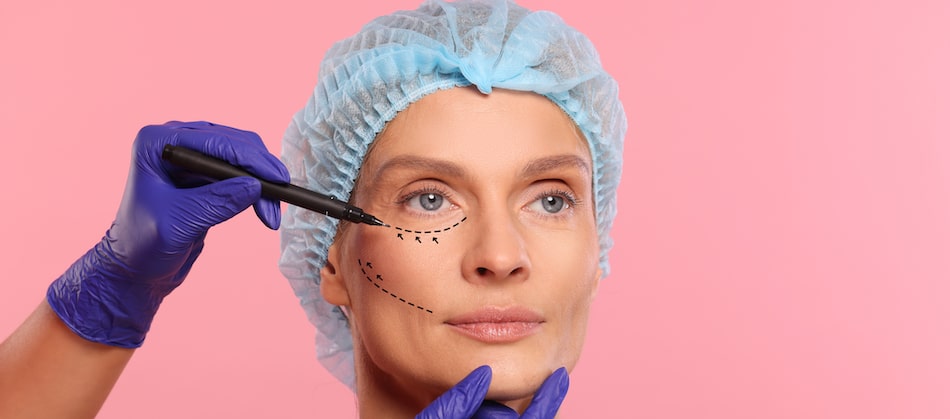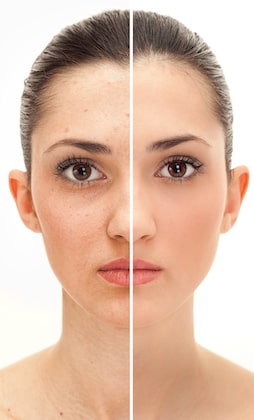
Cosmetic surgery continues to grow in popularity as patients undergo some of their favorite procedures including Botox, rhinoplasty, and fillers. Even with the continuing performance of these popular treatments, there are other cosmetic surgery procedures that are not as well-known among the public (yet). While these procedures might be new to the public, most of them have been approved by the FDA. Let’s take a look at some of the latest cosmetic surgery treatments available to patients.
Ellacor has been cleared by the FDA to treat the appearance of moderate to severe wrinkles that are located in the mid to lower face. The treatment uses hollow needles and an action like a sewing machine to extract up to eight percent of the skin in the treated area in less than an hour. The depth of the treatment and the amount of microcores removed by the doctor can be customized for each patient. The treatment targets the cheeks, chin, and jowls as well as the area around the mouth and gives the skin a smoother and tighter look. The procedure is not able to address issues with the deeper tissues of the face, so the results are not as dramatic as a surgical facelift.
 RHA Redensity is a hyaluronic acid that is approved by the FDA for the correction of lip lines that run from moderate to severe. Its biophysical properties have been described as “soft and flowing and quit moldable.” RHA Redensity is able to evenly integrate into the skin and adapts well to movement, so it is not affected when it is stretched, bent, or compressed by any muscles that surround it. The gel is injected superficially and provides the treated area with a natural feel and appearance whether the face is moving or still. A clinical trial found the gel to be long-lasting with sixty-six percent of the patients maintaining their results after a year.
RHA Redensity is a hyaluronic acid that is approved by the FDA for the correction of lip lines that run from moderate to severe. Its biophysical properties have been described as “soft and flowing and quit moldable.” RHA Redensity is able to evenly integrate into the skin and adapts well to movement, so it is not affected when it is stretched, bent, or compressed by any muscles that surround it. The gel is injected superficially and provides the treated area with a natural feel and appearance whether the face is moving or still. A clinical trial found the gel to be long-lasting with sixty-six percent of the patients maintaining their results after a year.
Aptos threads have been approved by the FDA for a skin lift. The Aptos PLLA/PCL threads are made from a novel polymer blend, and they are barbed to provide a good amount of tissue gripping strength along with long-lasting results. These threads have been found to work best in the mid and lower areas of the face so the cheeks can gain a better contour along with a tighter under-chin and jawline. Aptos can also be used in combination with fillers to give the face a natural look whether the person is smiling, or the face is at rest.
Sculptra for cellulite is not approved by the FDA (yet) to treat cellulite but it is used off-label by some doctors for this purpose. Sculptra for cellulite improves the texture of cellulite and helps the skin to enjoy a smoother look beyond its texture (such as improving the crepey texture of the arms, knees, and elbows). In addition, Sculptra is able to give lax and wavy skin that frequently accompanies the formation of dimples a firmer look and feel.
Mentor is offering a breast implant that has been approved by the FDA and it is known as the MemoryGel Boost. This breast implant is a silicone device that is round and smooth, so it remains soft to the touch even though it holds its shape in the breast. The MemoryGel Boost is an ideal treatment for a patient who wants to enjoy an enhanced fullness to the upper pole after having breast implant surgery. As a person ages, the breasts can start to sag and deflate which means they no longer have a perky and youthful look which drives many women to have breast augmentation surgery. A traditional breast implant surgery involves the placement of the implant under the muscle and tissue of the breast so the breast implant will soften and round out the lower breast pole and highlight the native tissue for a subtle result. If a patient wants to have a larger look to their cleavage, they will need to have bigger breast implants placed in the body. On the other hand, MemoryGel Boost is more focused on augmentation on the top which means it enhances the upper pole for a look to the breast that is fuller and has more volume as well as being long-lasting in appearance.
While these treatments are some of the latest additions to the world of cosmetic surgery, they are not necessarily offered everywhere in the country. Patients will need to research the procedures in order to find cosmetic surgeons who are trained and experienced in performing their treatment of choice. Once a doctor is located, a patient will have to schedule a consultation appointment with the cosmetic surgeon to learn more about the pros and cons of a certain procedure and allow the doctor to determine if the person is an ideal candidate for the desired treatment.
- MA